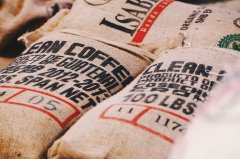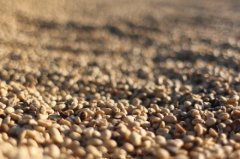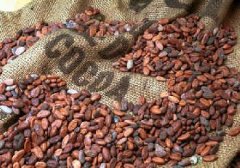Specialty Coffee Beans Lists
-
Arabica coffee cultivation techniques Multi-stem shaping and cultivation of coffee trees

Multi-stem integer Multi-stem integer is an integer method that uses the first branch as the main result branch. The purpose of integer is to cultivate multiple trunks and grow a large number of robust first-order branches. Multi-trunk trees do not pick the top. As a result, when the yield decreases after 3 to 5 years, new trunks are replaced.① Cultivation of multi-stem method oblique planting method: When planting, the seedlings are obliquely planted, generally at an angle of 30~60 degrees with the ground. oblique planting can inhibit
2015-02-16 Arabica coffee cultivation techniques multi-stem shaping cultivation utilization one -
Cultivation techniques of small-grain coffee soil management of coffee cultivation

Weeding, covering the young coffee garden, weeds are easy to breed, especially in the rainy season, weeding should be done once a month. If the labor force is sufficient, clean the grass should be removed first. Adult coffee garden can be weeded once every 2 to 3 months. If you use herbicides, you should be careful not to spray on the branches and leaves of coffee, and it is more important and prudent to use them in young coffee gardens. Coffee has shallow roots and is vulnerable to adverse climatic conditions such as high temperature and drought.
2015-02-16 Small grains coffee cultivation techniques planting soil management weeding mulching young -
Cultivation techniques of small Coffee Irrigation and fertilization of Coffee trees

Irrigation of coffee planting areas in Yunnan Province can be divided into rainy season and dry season. Irrigation in the dry season, especially in the flowering period, can ensure the normal growth and flowering of coffee plants, improve the fertility rate, and achieve high yield. Fertilization is one of the key measures to obtain high yield of cultivated coffee. According to the data, for every kilogram of dried beans harvested, coffee trees have to come from the soil.
2015-02-16 Small grains coffee cultivation techniques irrigation fertilization Yunnan Province planting areas -
Cultivation techniques of small Coffee in Yunnan Province Pest Control of Coffee trees

1. Coffee tiger, longicorn beetle. The coffee tiger longicorn beetle harms the coffee trunk for more than 2 years. At first, it eats between the cambium and xylem, and then eats the xylem. It has a great effect on coffee, the light ones make the plants yellow, withered branches and fruit drop, and the serious ones die of the whole plant. At the initial stage of the damage, there was no obvious hole in the appearance, but only slightly raised in the epidermis of the injured area. Prevention and control methods: strengthening the management of ①
2015-02-16 Yunnan Province small grains coffee cultivation techniques insect pests control longicorn beetles larvae -
Cultivation techniques of small Coffee in Yunnan Province Coffee Tree Disease Control

1. Coffee rust is the main disease of coffee, the most harmful, the damaged plants, light reduced yield, serious death. Coffee rust is mainly harmful to leaves and sometimes to young fruits and twigs. After the leaves were infected, many light yellow spots appeared at first and enlarged in the form of water stains, followed by orange-yellow powdery spores on the back of the leaves, and there was a light green halo around the disease spots, which gradually expanded or connected in the later stage.
2015-02-16 Yunnan Province small grains coffee cultivation techniques diseases control -
Cultivation techniques of small Coffee in Yunnan Province harvesting and processing of coffee beans

Timely harvest is an important link to ensure high coffee yield and improve product quality. The harvest time of small seed coffee is more concentrated, when the fruit turns red, it can be harvested. It should be picked along with ripening. After completely turning red, the fruit is easy to fall off. (9) Wet processing is generally adopted in processing. (1) washing fruit. Wash away the soil or sundries that stick to the fruit. (2) grading of fresh fruit. Green fruit, dried fruit,
2015-02-16 Yunnan Province small grains coffee cultivation techniques coffee beans harvesting processing -
Latin American coffee rookie boutique coffee beans Salvadoran coffee

El Salvador, a name that may not be very familiar to coffee lovers, is beginning to emerge quietly in the world of boutique coffee (Specialty Cxxx). El Salvador, a beautiful small country with volcanoes, is the smallest country in Central America, with an area of only more than 20, 000 square kilometers and a population of 5.6 million.
2015-02-16 Latin America coffee rookie boutique coffee beans El Salvador a -
General situation of Coffee Bean Workshop in Baoshan, Yunnan Province

In Baoshan City, Yunnan Province, people divide the climate change in the year by the rainy season and the dry season. It is a quiet and sunny afternoon. Kapok trees sort out their branches and leaves in the warm spring wind. It will soon fill the whole courtyard with the fragrance of marshmallow. Tian Daihe decided whether or not to go to the kindergarten in Lujiang Town according to his own mood.
2015-02-16 Yunnan Baoshan coffee beans workshops China coffee general situation Baoshan City Lao -
China coffee beans origin introduction Yunnan coffee cultivation introduction

The west and south of Yunnan Province are located between the 15th latitude and the Tropic of Cancer. Most of the areas are 1000-2000 meters above sea level. The terrain is mainly mountainous and sloping, with large undulations, fertile soil, sufficient sunshine, abundant rainfall and large temperature difference between day and night. These unique natural conditions form the particularity of Yunnan Arabica coffee taste, which is strong but not bitter, fragrant but not strong and slightly fruity. 50 years ago
2015-02-16 China Coffee Bean Origin Introduction Yunnan Coffee Cultivation Yunnan Province West South -
El Salvador boutique coffee beans Parkmara coffee

El Salvador, located in the northwest of Central America and bordered by the Pacific Ocean to the south, is one of the birthplaces of the ancient Mayan civilization. But El Salvador is most famous for its unique, mild-flavored coffee. El Salvador: Parkmara coffee flavor and taste characteristics: mild taste, good texture. El Salvador, located in the northwest of Central America, bordered by the Pacific Ocean to the south, is an ancient Ma.
2015-02-15 El Salvador boutique coffee beans species Parker Mara coffee bit -
Common sense of coffee beans in eight major producing areas of Guatemala

Guatemala is a famous producer of high-quality Arabica coffee in Central America. Coffee from five volcanic and three non-volcanic producing areas is very unique and enjoys a high reputation in the international market. Photo / compilation: Huang Wei copyright Guatemala is a famous premium Arabica coffee producer in Central America. Coffee from five volcanic and three non-volcanic producing areas is very unique in the international market.
2015-02-15 Guatemala eight producing areas coffee characteristics coffee beans common sense medium -
Production of Fine Coffee beans visit the Blue Mountains of Jamaican Coffee producing area

I'm either at the cafe or on my way to the cafe. This famous sentence by Austrian writer Zweig comes to mind as it winds up the mountain road following the looming aroma of coffee. The reporter and his party are not going to a cafe for a seat, but are slowly approaching the Blue Mountains, a famous coffee producer in the Caribbean island nation of Jamaica. The Blue Mountains near the sea are located in Yamai.
2015-02-15 Boutique coffee beans production visits Jamaica coffee origin Blue Mountains I am not yes -
Coffee flavors from different coffee producing areas in the world coffee producing areas in Vietnam

Vietnam may have been influenced by French colonial rule, and the coffee grown in Vietnam has a French flavor. Arabica coffee was first brought to Vietnam by French missionaries. Coffee production in Vietnam: 96% of Robbins coffee comes from small farms, but some state-owned farms also grow coffee trees. Near Tokyo (Tonkin) Bay, there are mostly Java or bourbon varieties. The main varieties produced are Robbins.
2015-02-15 Global different coffee origin flavor Vietnam Xu France colonial system -
Coffee flavors from different coffee producing areas in the world coffee producing areas in the Philippines

Philippine coffee was introduced into the Philippines (Philippines) in the early 19th century, and by 1880 the country had become the fourth largest coffee exporter in the world. However, due to the spread of coffee rust, the country became a coffee importer soon after 1880. However, the coffee growing industry has gradually recovered. The origin of coffee in the Philippines: the Philippines is less able to grow 4 varieties of coffee
2015-02-15 Global different coffee origin flavor Philippines introduction -
Coffee flavors from different coffee producing areas around the world coffee producing areas in Peru

Peruvian coffee producing areas: up to 98% of Peruvian coffee is grown in forest areas, and most of the producers are small farmers. Peru's finest coffee is produced in Chanchmayo, Cuzco, Norte and Puno. Most Peruvian coffee is grown under natural conditions, but it is also difficult to confirm the cultivation of all coffee trees. Nature
2015-02-15 Global different coffee origin flavor Peru up to -
Coffee flavor from different coffee producing areas around the world coffee producing areas in Ecuador

The Ecuadorian Arabian Coffee Tree was first introduced to Ecuador (Ecuador) in 1952 and its coffee is of good quality, especially the coffee harvested in early June. Ecuador's coffee origin: the best Arabica coffee is produced in the Andes, especially in the Chanchagu Valley (ChanchamgoValley). The Andes are divided into two mountains, extending from south to north to central Ecuador
2015-02-15 Global different coffee origin flavor Ecuador Arab -
Coffee flavors from different coffee producing areas around the world coffee producing areas in Nicaragua

In Nicaragua, coffee production has been seriously affected in many countries for political reasons. Nicaraguan coffee industry is no exception. The 1979 revolution forced coffee planters to flee to Miami. A period of indecision followed, when the government considered whether to redistribute land (including many plantations), which led to a shortage of coffee and a decline in production
2015-02-15 Global different coffee origin flavor Nicaragua many countries -
Coffee Flavors from Different Coffee Producing Areas in the World Coffee Producing Areas in Angola

Angola Angola is the world's fourth largest coffee industry, but only produces a small amount of Arabica coffee, high quality. Angola coffee origin: 98% of Angola's coffee is Robett coffee. The best brands in Angola were Ambriz, Amborm and NovoRedondo, all with consistent quality
2015-02-15 Global Different Coffee Origin Flavor Angola World Fourth -
Coffee flavors from different coffee producing areas around the world coffee producing areas in Tanzania

In Tanzania, due to political instability and rampant diseases and insect pests, the coffee industry in Tanzania has been damaged, leading to a decline in the overall level and instability of coffee quality, which in turn has led to a reduction in prices. the result of lower prices is usually a further decline in the coffee industry. What's more, it is estimated that more than 12% of the Arabs grown in northern Tanzania from 1969 to 1985
2015-02-15 Global different coffee origin flavor Tanzania due to political situation -
Coffee flavors from different coffee producing areas around the world coffee producing areas in Brazil

Brazil is vividly compared to the giant and monarch of the coffee world. There are about 3.97 billion coffee trees there, and small farmers now grow 75% of the country's coffee. The number of coffee producers in Brazil is twice or even three times that of Colombia, the second largest coffee producer in the world. Coffee production in Brazil: in Milasgira, southeastern Brazil
2015-02-15 Global different coffee origin flavor Brazil image local comparison metaphorical
